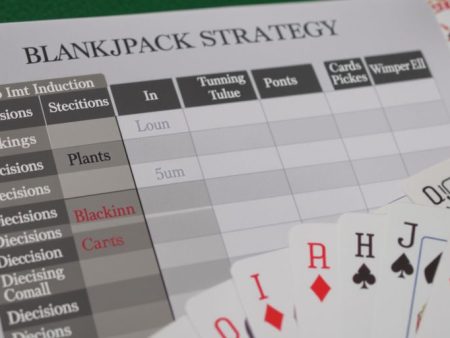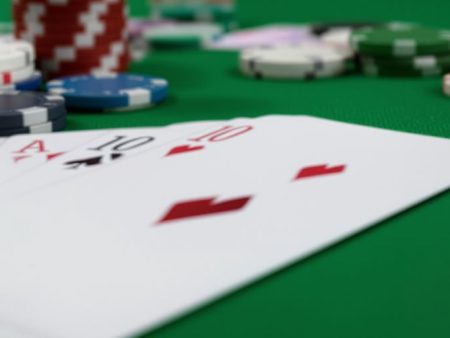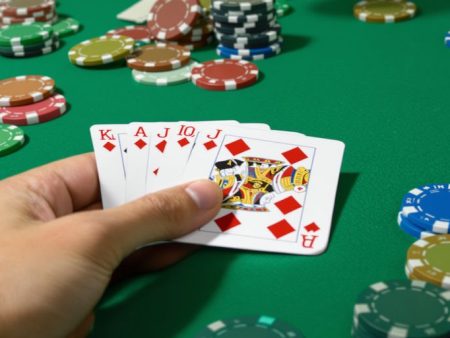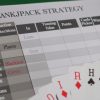Blackjack is a game that many people enjoy, but to really get good at it, you need to know how the cards work. It’s not just about luck; understanding the value of each card is pretty important. This guide will break down exactly how card values work in blackjack, from the simple numbers to the tricky Ace. Knowing this stuff is the first step to playing smarter and maybe even winning more often.
Key Takeaways
- Numbered cards from 2 to 10 are worth their face value. So, a 7 is worth 7 points.
- Face cards, which are Jacks, Queens, and Kings, all count as 10 points each. It doesn’t matter which face card it is.
- The Ace is special because it can be worth either 1 or 11 points. The game decides which value is best for your hand.
- Figuring out your hand total is simple addition. Just add up the values of your cards, keeping in mind the Ace’s flexibility.
- Knowing how card values work helps you decide whether to hit, stand, or double down, which is a big part of playing blackjack well.
Understanding Blackjack Card Values
Alright, let’s talk about the nitty-gritty of blackjack: the card values. It sounds simple, right? Just add ’em up. But honestly, getting this part down is like, the first real step to not just playing, but actually playing well. It’s not just about knowing what a card is worth; it’s about how that value plays into everything else you do at the table. Think of it as the alphabet of blackjack – you can’t make words without knowing your letters.
The Importance of Knowing Card Values
Seriously, if you don’t know what each card is worth, you’re basically guessing. And in blackjack, guessing is a fast track to losing your shirt. Knowing the values helps you understand your hand, figure out what the dealer might have, and make smart choices. It’s the bedrock of any strategy, even the super basic stuff. Without this knowledge, you’re just a passenger, not a player. It’s pretty wild how much difference knowing a few numbers makes.
Core Principles of Blackjack Card Valuation
So, how does this all work? It’s actually pretty straightforward, mostly. You’ve got three main categories of cards to worry about: the number cards, the face cards, and the Ace. Each one has its own deal.
- Number Cards (2-10): These are the easiest. They’re worth exactly what they say they are. A 7 is worth 7 points. A 3 is worth 3 points. Simple as that. No tricks here, thankfully.
- Face Cards (Jack, Queen, King): This is where some people get tripped up. All of these cards – the Jack, the Queen, and the King – are worth 10 points each. Yep, all of them. Doesn’t matter if it’s a King of Spades or a Jack of Hearts; they’re all a solid 10.
- The Ace: Ah, the Ace. This card is the wild child of the deck. It can be worth either 1 point or 11 points. Which one it is depends on what helps your hand the most without going over 21. This flexibility is what makes the Ace so interesting and, frankly, so important.
How Card Values Influence Strategy
This is where it gets interesting. Knowing these values isn’t just trivia; it directly shapes your decisions. If you have a hand totaling 16, knowing whether it’s a hard 16 (like an 8 and an 8) or a soft 16 (like an Ace and a 5, where the Ace is currently 11) changes everything. A soft hand gives you more room to hit without busting. Conversely, a hard 16 is a real gamble to hit on. The dealer’s up card also plays a massive role. If the dealer shows a 6, and you have a 16, you might stand. But if they show a 10, you’re probably hitting that 16, hoping for a low card. It’s all about probabilities and how those card values stack up against what the dealer might have. You’re constantly calculating, even if it feels like instinct after a while.
Valuation of Numbered Cards

Let’s talk about the number cards in blackjack, the ones with actual numbers on them, like 2 through 10. It’s pretty straightforward, thankfully. These cards are worth exactly what they show. A 7 is a 7, a 3 is a 3. Simple, right? You don’t need to overthink it. The suit of the card, whether it’s hearts, diamonds, clubs, or spades, doesn’t matter one bit for these. It’s all about the number printed on the face. So, when you’re adding up your hand, just use the number you see. This makes calculating your total pretty easy, which is a relief when you’re trying to figure out your next move. These cards directly contribute to your hand’s total, pushing you closer to that magical 21. It’s the backbone of your score, really. You’ll be adding these up constantly, so get comfortable with their face value. It’s the most basic part of the game, but you can’t win without knowing it.
- Two through Ten: These cards are valued at their printed number.
- Suit Irrelevance: The suit of these cards has no impact on their value.
- Hand Totals: They directly add to your score, moving you towards 21.
The Unique Value of Face Cards

Alright, let’s talk about the fancy cards in blackjack – the Jacks, Queens, and Kings. These are what we call ‘face cards’ because, well, they have faces on them. It’s a common point of confusion, but here’s the deal: all face cards are worth a solid ten points. Yep, it doesn’t matter if it’s a Jack, a Queen, or a King, and it certainly doesn’t matter if it’s a heart or a spade. They all contribute ten to your hand total. This is super important because it means a huge chunk of the deck is made up of ten-value cards. Knowing this can really help you figure out what cards might be coming next, especially if you’re into counting cards, though that’s a whole other can of worms.
Think about it: you’ve got four Jacks, four Queens, and four Kings. That’s twelve cards, all worth ten. Plus, you’ve got the ten cards themselves, which are also worth ten. So, a quarter of the deck is made up of cards that give you ten points. Pretty wild, right?
Here’s a quick rundown:
- Jacks (J): Always 10 points.
- Queens (Q): Always 10 points.
- Kings (K): Always 10 points.
There’s no secret value or special bonus for having a King over a Jack. They’re all equal in their ten-point contribution. So, if you get a Queen and a King, that’s 20 points right there. That’s a strong hand, and you’d probably want to stand on that, no matter what the dealer is showing. It’s these simple, consistent values that form the backbone of your blackjack decisions. Don’t get tripped up by the fancy pictures; just remember they’re all worth ten.
The Ace: A Card of Dual Value
Alright, let’s talk about the Ace. This card, man, it’s like the chameleon of the blackjack deck. It’s not just a card; it’s a strategic wild card, and understanding its dual nature is super important if you want to get anywhere in this game. Seriously, it can be a 1 or an 11. How cool is that? It really depends on what other cards you’ve got.
Understanding the Ace’s 1 or 11 Flexibility
So, picture this: you get dealt an Ace and a 6. Boom! You’ve got a 17. But wait, is it really a 17? Well, it could be an 18. The game lets you decide, and you’ll pick whichever number helps you the most. If you have an Ace and a 10, that’s an instant blackjack, a natural 21, and you’re probably feeling pretty good about yourself. But if you have an Ace and, say, a 9, you’ve got a 10 or a 20. Most of the time, you’ll want that 20, right? It’s all about not busting and getting as close to 21 as possible. It’s a bit of a puzzle, but a fun one.
How the Ace Affects Soft and Hard Hands
This is where things get a little more technical, but stick with me. When you have an Ace that you’re counting as 11, your hand is called a "soft" hand. So, that Ace and 6? That’s a soft 17. It’s called soft because you can still draw another card without busting. If you draw a 5 to your soft 17, it becomes a soft 22, which is too much. But, the Ace can then just become a 1, making your hand a 12 (6 + 5 + 1). See? It’s flexible. A "hard" hand is any hand that doesn’t have an Ace, or where the Ace must be counted as a 1 to avoid busting. For example, if you have a 10 and a 7, that’s a hard 17. If you then draw an Ace, you can’t count it as 11 because 10 + 7 + 11 is 28, way over 21. So, the Ace has to be a 1, giving you a hard 18 (10 + 7 + 1). It’s a bit of a balancing act.
Strategic Implications of the Ace’s Value
Knowing whether your hand is soft or hard, and how the Ace is playing, totally changes your decisions. With a soft hand, you’ve got more freedom to hit because you can always fall back on the Ace being a 1 if you go over. For instance, a soft 17 (Ace + 6) is a pretty decent hand, but you might still hit if the dealer is showing a strong card. If you draw a 4, your hand becomes a soft 21 (Ace + 6 + 4). Nice! But if you draw a 9, your hand becomes a hard 19 (6 + 4 + 9, with the Ace now being a 1). A hard hand, on the other hand, is much riskier to hit. If you have a hard 16, hitting is usually a bad idea because any card higher than a 5 will make you bust. The Ace is the game changer, really. It gives you options and can save you from a bad situation, or help you build a winning hand. You gotta respect the Ace.
Calculating Blackjack Hand Totals
So, you’ve got your cards. Now what? Figuring out your hand’s total is pretty simple, really. It’s just adding up the numbers on your cards. Easy peasy, right? Most of the time, yes. A 7 and a 4? That’s 11. A King and a 6? That’s 16. You just keep adding as you get more cards. The whole point is to get as close to 21 as possible without going over. It’s not rocket science, but you gotta pay attention.
The Simple Addition of Card Values
Look, the numbered cards are straightforward. A 2 is worth 2, a 5 is worth 5, and a 10 is worth 10. Face cards – the Jack, Queen, and King – they’re all worth 10 too. No tricks there. So, if you get a Queen and a 7, your total is 17. If you draw a 3 next, you’re at 20. See? Just add them up. It’s the foundation of everything you do at the table.
Navigating Totals with Multiple Aces
Now, Aces are where things get a little interesting. Remember, an Ace can be a 1 or an 11. This is where you have to think a bit. If you have an Ace and a 6, that’s a soft 17 (11 + 6). You can hit that hand without busting because if you get a 10, your Ace just becomes a 1, making your total 17 (1 + 6 + 10). But if you have two Aces? If you count both as 11, you’re at 22, which is a bust. So, one Ace has to be an 11, and the other has to be a 1, giving you a total of 12. It’s all about avoiding that bust.
The Role of Hand Totals in Decision Making
Your hand total is your guide. It tells you what to do next. A total of 12? You’re probably going to hit, hoping for a low card. A 17 or 18? You’re likely going to stand, feeling pretty good about your chances. The dealer’s up card matters too, of course, but your own hand total is the first thing you look at. It’s the engine that drives your decisions.
Here’s a quick rundown:
- Numbered Cards (2-10): Worth their face value.
- Face Cards (J, Q, K): Each worth 10.
- Ace: Worth 1 or 11, depending on what’s best for your hand.
Distinguishing Soft and Hard Hands

So, you’ve got your cards, and you’re looking at your total. But wait, is that total a ‘soft’ hand or a ‘hard’ hand? This distinction is super important for playing blackjack smart. It’s not just about the number; it’s about how flexible that number is.
Defining Soft Hands with an Ace
A soft hand is any hand that includes an Ace where that Ace is counted as 11. Think of it like this: the Ace gives you a little wiggle room. If you have an Ace and a 6, that’s a soft 17. You can hit it, and if you get a 7, your Ace becomes a 1, making your total 14 instead of 24 (which would be a bust). It’s called ‘soft’ because the total can change without busting.
Here’s a quick look:
- Ace + 6 = Soft 17 (Ace is 11, 6 is 6)
- Ace + 5 + 9 = Soft 15 (Ace is 11, 5 is 5, 9 is 9)
- Ace + Ace + 7 = Soft 19 (One Ace is 11, the other is 1, 7 is 7)
Understanding Hard Hands Without an Ace
Now, a hard hand is pretty straightforward. It’s any hand that doesn’t have an Ace, or it’s a hand where all Aces must be counted as 1 to avoid busting. If you have a 10 and a 7, that’s a hard 17. There’s no flexibility here. If you hit and get a 5, you bust. It’s a rigid total.
Most hands you’ll get are hard hands. They’re the standard, no-nonsense totals.
- 10 + 7 = Hard 17
- 8 + 9 = Hard 17
- 5 + 6 + 8 = Hard 19
Strategic Differences Between Soft and Hard Hands
Why does this even matter? Because the strategy changes depending on whether your hand is soft or hard. Basic strategy charts, which are your best friend in blackjack, will tell you to play these hands differently. For example, you might hit a soft 17 but stand on a hard 17. The dealer’s rules on hitting or standing on soft 17 also play a big role in how you should approach your own soft hands. It’s all about making the best decision based on that flexibility, or lack thereof, in your hand total. Knowing this difference can seriously improve your game.
Common Misconceptions About Card Values
Lots of people get tripped up on how the cards actually work in blackjack. It’s not super complicated, but there are definitely some common ideas floating around that just aren’t true. Let’s clear some of that up.
Clarifying Face Card Valuations
This is a big one. You’ll hear people say that Jacks, Queens, and Kings have different values, maybe based on their rank or something. Nope. All face cards – Jacks, Queens, and Kings – are worth exactly 10 points. It doesn’t matter if it’s a Jack of Spades or a King of Hearts; they all add up to 10. This is super important because it means a huge chunk of the deck is made up of 10-value cards. Keep that in mind.
Addressing Myths About Ace Values
The Ace is the wild child of the deck, right? It can be a 1 or an 11. This is true, but people get confused about when it’s which. It’s not a choice you make randomly. The game decides for you based on what makes the best hand without busting. If you have an Ace and a 6, that’s a soft 17 (11 + 6). If you then draw a 5, it becomes a hard 12 (1 + 5 + 6), because if it stayed an 11, you’d have 22, which is a bust. The goal is always to get as close to 21 as possible without going over. The Ace’s flexibility is what makes it so powerful, but it’s not a free-for-all.
Dispelling Notions of Variable Card Values
Another myth is that card values might change depending on the casino or even the specific table you’re playing at. That’s just not the case. The values for numbered cards (2 through 10), face cards (J, Q, K), and the Ace are standardized across all blackjack games, everywhere. A 7 is always a 7, a Queen is always a 10, and an Ace is always a 1 or 11. The rules of the game might differ slightly, like whether the dealer hits or stands on a soft 17, but the card values themselves? They’re rock solid. Don’t let anyone tell you otherwise; it’s a simple system, and once you get it, you’re golden.
Blackjack’s Objective and Card Values

So, what’s the big idea with blackjack? It’s all about getting as close to 21 as possible without going over. That’s the main goal, plain and simple. You’re trying to beat the dealer’s hand, and knowing how much each card is worth is your ticket to doing that. Without this knowledge, you’re just guessing, and that’s a fast way to lose your money. It’s like trying to bake a cake without knowing what flour or sugar does; you’re going to end up with a mess.
The Goal of Reaching Twenty-One
The whole point of the game revolves around that magic number, 21. You get dealt two cards, and their values are added up. If you hit the jackpot with a 10-value card and an Ace, that’s a ‘blackjack,’ an instant win unless the dealer also has one. If you don’t get 21 right away, you can ask for more cards, one at a time, to try and get closer. But be careful! If your total goes over 21, you ‘bust,’ and you lose automatically. It’s a constant balancing act, trying to improve your hand without busting.
How Card Values Contribute to the Objective
Every card plays a part in reaching that 21. Number cards are easy; they’re just their face value. So, a 7 is worth 7 points. Easy peasy. Face cards – the Jacks, Queens, and Kings – are all worth a solid 10 points each. This means there are a lot of 10-point cards in the deck, which is something to keep in mind. The Ace is the wild card, literally. It can be worth either 1 or 11 points. This flexibility is super important because it helps you avoid busting or reach 21 more easily. For instance, if you have an Ace and a 6, that’s a total of 17. But if you draw another card and the total would go over 21, the Ace can then be counted as just 1 point instead of 11. It’s a real game changer.
Winning Hands and Busting Scenarios
Let’s break down what happens:
- Winning: You win if your hand total is closer to 21 than the dealer’s without going over. An automatic win is getting 21 on your first two cards (a blackjack), provided the dealer doesn’t also get blackjack.
- Busting: If the total value of your cards exceeds 21, you bust. This means you lose your bet immediately, no matter what the dealer’s hand is.
- Push: If you and the dealer both have the same total (and neither has busted), it’s a ‘push,’ and you get your bet back. No win, no loss.
Understanding these outcomes is directly tied to knowing your card values. It’s not just about adding numbers; it’s about making smart decisions based on those totals.
Strategic Decisions Based on Hand Totals
So, you’ve got your cards, you’ve added ’em up, and now what? This is where the real game begins, folks. Knowing your hand total is just step one. The next, and arguably more important, step is figuring out what to do with that total. It’s all about making smart choices based on the numbers staring back at you, and also, you know, what the dealer is showing.
Hit, Stand, and Double Down Decisions
These are your main moves, the bread and butter of blackjack decision-making. You’ve got your hand total, and you’re looking at the dealer’s upcard. Should you take another card (hit)? Stick with what you have (stand)? Or maybe, just maybe, you want to double your bet and take just one more card (double down)? It’s a gamble, sure, but a calculated one if you know what you’re doing. For instance, if you have a hard 11, doubling down is often a fantastic move, especially if the dealer has a weak upcard like a 5 or 6. You’re giving yourself a great shot at a strong total without much risk of busting. But if you’ve got a stiff hand, say a hard 12, and the dealer is showing a 2 or 3? You might want to stand. Taking another card could easily send you over 21. It’s a constant dance of risk assessment.
The Impact of Card Values on Player Actions
Think about it: a pair of 8s. Individually, they’re just 8s. But together? That’s 16, a pretty shaky total. Most players would instinctively hit. But wait! If you split those 8s, you get two separate hands, each starting with an 8. This changes everything. Splitting pairs, especially 8s or Aces, is a prime example of how understanding card values completely alters your actions. You’re not just looking at the sum anymore; you’re looking at the potential each card holds. A 10-value card is great for getting close to 21, but two of them in your hand? That’s 20, and you’re almost certainly standing. The value isn’t just in the number; it’s in the combination and the possibilities they create.
Dealer’s Up Card and Hand Total Considerations
This is where the dealer’s visible card becomes your crystal ball, sort of. If the dealer is showing a 2 through 6, these are generally considered weak upcards. Why? Because they give the dealer a higher chance of busting. When the dealer is weak, you can afford to be a bit more aggressive with your own hand. You might stand on totals you’d normally hit, or even double down more frequently. Conversely, if the dealer shows a 7 through Ace, these are strong upcards. The dealer has a much better chance of making a good hand, or even a blackjack. In these situations, you need to play more conservatively. You’ll be hitting hands you might otherwise stand on, and you’ll be very cautious about doubling down or splitting. It’s a constant back-and-forth, a strategic chess match played with cards.
Mastering Blackjack Through Card Value Knowledge
So, you’ve been playing blackjack, maybe you’re even winning a bit, but do you really get how the cards work? It’s not just about hitting 21, you know. It’s about understanding the engine that drives the whole game. Knowing your card values is like knowing the alphabet before you try to write a novel. Without it, you’re just guessing, and in blackjack, guessing gets expensive fast.
The Foundation for Basic Strategy
Think of basic strategy as your blackjack GPS. It tells you when to hit, when to stand, when to double down, or even when to split your hand. But this GPS? It runs on card values. If you don’t know that a 10-value card (that’s any face card or a 10) is a big deal, or how an Ace can be your best friend or your worst enemy, your GPS is going to send you off a cliff. Seriously, the math behind basic strategy is all about these values. You see a 7, the dealer shows a 9? Basic strategy has an answer, but it’s based on the value of those cards and what they mean for the possible totals.
Enhancing Gameplay with Card Value Understanding
Once you’ve got the basic strategy down, knowing card values lets you start thinking a step ahead. It’s not just about following rules; it’s about understanding why those rules exist. For instance, knowing there are a lot of 10-value cards in the deck helps you understand why hitting on a 16 against a dealer’s 10 is usually a bad idea. You’re way more likely to get a 10 and bust. Or consider those soft hands with an Ace. That flexibility is huge! A soft 17 (Ace and a 6) is a much different beast than a hard 17 (like a 10 and a 7). You play them differently because of that Ace’s dual nature. It’s these little insights, born from knowing your card values inside and out, that separate a casual player from someone who’s really playing smart.
Achieving Mastery by Knowing How Card Values Work in Blackjack
True mastery in blackjack isn’t about luck; it’s about knowledge. And the bedrock of that knowledge is card values. It’s not complicated, really. Number cards are just their number. Face cards (J, Q, K) are all 10. The Ace? It’s either 1 or 11, and that choice makes all the difference. Get this down, and you’re already miles ahead. You start to see patterns, anticipate outcomes, and make decisions that aren’t just reactive but proactive. It’s like learning to read the weather instead of just getting rained on. When you truly internalize how each card contributes to your hand total and how those totals interact with the dealer’s up card, you’re not just playing blackjack anymore; you’re understanding it. And that understanding is the key to consistent success. It’s pretty cool when you think about it.
Wrapping Up: Your Blackjack Card Value Foundation
So, we’ve gone over how the cards stack up in blackjack. It’s pretty straightforward, really – most cards are just what they say they are, and the face cards all stick together at ten points. The Ace is the tricky one, being either a one or an eleven, and that’s where things get interesting with soft and hard hands. Knowing these values isn’t just about memorizing numbers; it’s the first step to making smarter choices at the table. Think of it as building the base for your blackjack game. Keep practicing how you add those card values up, and you’ll be much better prepared for whatever the dealer throws your way.
Frequently Asked Questions
What are the number cards worth in blackjack?
In blackjack, number cards from 2 to 10 are worth their face value. So, a 7 is worth 7 points, and a 10 is worth 10 points. The suit of the card doesn’t matter at all.
How much are face cards (Jack, Queen, King) worth?
All face cards – that means Jacks, Queens, and Kings – are always worth 10 points each. It doesn’t matter if it’s a Jack, Queen, or King; they all count as 10.
What is the value of an Ace in blackjack?
The Ace is special! It can be worth either 1 point or 11 points. You get to choose whichever value helps your hand the most, usually to avoid going over 21.
What’s the difference between a soft hand and a hard hand?
A ‘soft hand’ is a hand that includes an Ace counted as 11. For example, an Ace and a 6 make a soft 17. A ‘hard hand’ is a hand without an Ace, or where the Ace must be counted as 1 to avoid busting.
How do I calculate my hand total?
To get your hand total, you just add up the values of your cards. For example, a 5 and a 9 make a total of 14. If you have an Ace, you can count it as 1 or 11 to get the best possible total without going over 21.
What is the main goal in blackjack?
The main goal is to get a hand total as close to 21 as possible without going over, and to have a higher total than the dealer. Getting exactly 21 is great, but you can also win with a lower total if the dealer busts (goes over 21) or has a lower hand than you.
Do card values change depending on the casino?
No, card values are always the same in blackjack, no matter which casino you’re playing in or what variation of the game you’re playing. A 10 is always worth 10, and an Ace is always 1 or 11.
Why is knowing card values so important in blackjack?
Knowing card values is super important because it helps you decide whether to ‘hit’ (take another card), ‘stand’ (keep your current hand), or ‘double down’ (double your bet for one more card). This knowledge is the foundation of basic strategy, which helps you play smarter.
















